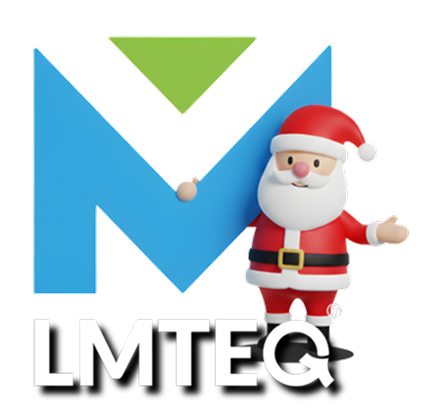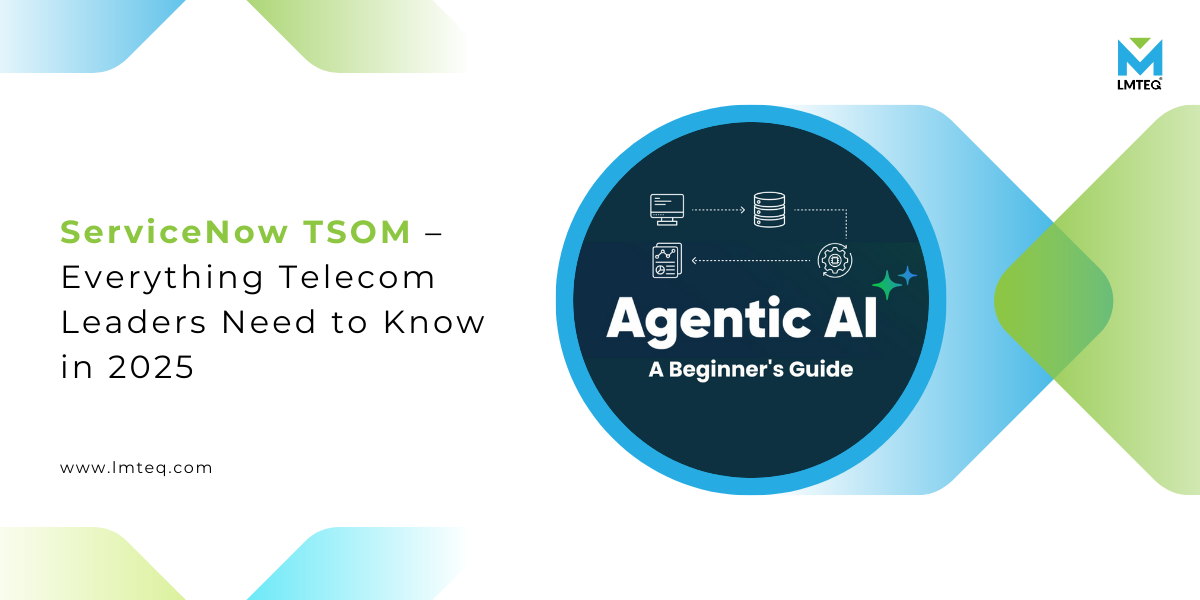Table of Contents
- The Telecom Industry at a Crossroads
- What is ServiceNow TSOM?
- The Pain Points of Today’s Telecom Operators
- Key Features of ServiceNow TSOM
- Before vs After ServiceNow TSOM
- Business Benefits
- Why ServiceNow TSOM Wins Over Alternatives
- Real-World Example: A Major Telco’s Transformation
- FAQs about ServiceNow TSOM
- Conclusion
The Telecom Industry at a Crossroads
Telecommunications has always been the backbone of digital economies. But in 2025, the industry is facing a perfect storm :-
- Customer churn is rising. Studies show that telecom customers switch providers 2x faster when outages last longer than 2 hours.
- 5G, IoT, and fiber rollouts are accelerating. This adds new layers of complexity for operators already stretched thin.
- Legacy OSS/BSS systems are holding operators back. Teams are still working in silos, juggling fragmented workflows and manual processes.
The cost of inaction is steep: lost revenues, higher operating costs, and declining customer satisfaction scores.
This is where ServiceNow Telecommunications Service Operations Management (TSOM) makes the difference. It unifies service and network operations, providing telecom operators with AI-driven visibility, faster incident resolution, and proactive customer communication.
In this blog, we’ll break down the real challenges telecoms face, how TSOM addresses them, and the tangible benefits operators can expect.
What is ServiceNow TSOM?
At its core, ServiceNow TSOM (Telecommunications Service Operations Management), a combination of ServiceNow ITOM (IT Operations Management) with its core platform capabilities, is a telecom-first platform that bridges the gap between customer service and network operations to eliminate the common Telecom Experience (TX) challenges.
Most solutions are designed for IT departments, but they fail when applied to telecom complexities like :-
- Order fallout during broadband or 5G activations.
- Alarms overload from thousands of network nodes.
- Lack of customer impact mapping during outages.
TSOM was built for telecom operators. It combines :-
- Service assurance → monitor network health, prevent outages.
- Incident & problem management → automate triage and resolution.
- Order orchestration → streamline and error-proof service activations.
- Customer alignment → directly connect network incidents to customer tickets.
Key takeaway – TSOM transforms disjointed processes into a single system of action, one platform where both network engineers and customer service agents can collaborate seamlessly.
The Pain Points of Today’s Telecom Operators
1. Legacy OSS/BSS Silos
The Problem :- Operators rely on decades-old OSS/BSS stacks that don’t talk to each other. This leads to duplicate entries, conflicting data, and hours wasted reconciling systems.
The TSOM Solution :- A unified operations dashboard that brings data from OSS, BSS, and ITSM into a single view.
The Tangible Benefit :- Operators save hours daily, reduce manual errors, and accelerate cross-team collaboration.
2. Incident Resolution is Too Slow
The Problem :- When outages happen, teams scramble. With manual triage, MTTR (Mean Time to Repair) can stretch into hours or even days. Customers grow impatient and churn.
The TSOM Solution :- AI and ML detect anomalies, prioritize the most critical incidents, and automate repetitive resolution steps.
The Tangible Benefit :- MTTR reduced by up to 45%. Faster fixes mean fewer escalations, improved SLA compliance, and happier customers.
3. Alarm Fatigue Overwhelms Engineers
The Problem :- Telecom engineers face alarm storms — often 60–70% of alerts are false positives. This wastes time and hides real problems.
The TSOM Solution :- AI filters noise, groups related incidents, and highlights true root causes.
The Tangible Benefit :- Alarm noise reduced by 50%, freeing engineers to focus on actual service-impacting issues.
4. New Service Rollouts Struggle to Scale
The Problem :- 5G, fiber, and IoT activations often fail due to manual order handling. Each failure delays revenue and frustrates customers.
The TSOM Solution :- Automated order orchestration ensures services activate correctly the first time.
The Tangible Benefit :- Fewer fallouts, faster activations → revenue recognized weeks earlier.
5. Poor Customer Communication During Outages
The Problem :- Call centers are flooded when outages occur because operators can’t easily identify which customers are impacted.
The TSOM Solution :- Real-time impact mapping connects network faults to customer records.
The Tangible Benefit :- Call center volume reduced by up to 20%, while customers receive proactive updates instead of waiting in frustration.
Key Features of ServiceNow TSOM
- Unified Service Operations → One platform for customer service, network, and IT teams.
- AI-Powered Insights → Prioritize real issues, eliminate noise.
- Closed-Loop Automation → Detect, diagnose, and resolve without manual effort.
- Impact Analysis → See instantly which customers are affected by outages.
- Order Orchestration → Automate broadband, fiber, and 5G activations end-to-end.
Before vs After ServiceNow TSOM
| Pain Point | Before ServiceNow TSOM | After ServiceNow TSOM |
|---|---|---|
| Incident Resolution | Hours or days to resolve due to manual triage | MTTR reduced by up to 45% with AI + automation |
| Alarm Management | Over 60% of alarms are false or irrelevant | Alarm noise reduced by ~50%, freeing up engineers |
| Service Activations (5G, Fiber, IoT) | High-order fallout, delays in revenue | Faster, error-free activations → quicker revenues |
| Customer Experience | Customers kept in the dark during outages | Real-time impact analysis → proactive communication |
| Operational Efficiency | Teams are siloed, and duplicate updates across OSS/BSS | Unified dashboards → hours saved daily |
Business Benefits
For Business Leaders (CXOs, COOs, CPOs)
- Improve NPS scores and reduce churn with proactive service.
- Reduce operating costs without sacrificing service quality.
- Monetize 5G and IoT services faster.
- Scale operations without increasing headcount.
For Operations Teams (Network Engineers, Customer Service Agents)
- Resolve incidents faster, without manual firefighting.
- Spend less time sifting through false alarms.
- Gain end-to-end visibility across customer and network workflows.
- Free up capacity to work on innovation, not repetitive tasks.
Why ServiceNow TSOM Wins Over Alternatives
- Telecom-first design – Unlike generic ITSM tools, TSOM is purpose-built for network + service complexity.
- End-to-end integration – Native integration with OSS, BSS, ITSM, CSM, and ITOM.
- AI-driven automation – Tangible cost savings by eliminating repetitive manual tasks.
- Future-ready – Seamlessly supports 5G, private networks, and IoT expansions.
Bottom line – Other vendors offer patches. TSOM offers a complete, future-proof system of action.
Real-World Example: A Major Telco’s Transformation
A Tier-1 telecom operator in APAC struggled with order fallout rates above 20% during fiber rollouts.
Customers faced long delays, and revenue recognition was stalled. After deploying TSOM’s order orchestration and AI-powered assurance, fallout rates dropped below 5%, activations became almost touchless, and customer satisfaction scores jumped.
This is the real-world impact TSOM is delivering globally.
FAQs about ServiceNow TSOM
1. What is ServiceNow TSOM, and how is it different from regular ITSM tools?
ServiceNow TSOM (Telecommunications Service Operations Management) is purpose-built for telecom providers. Unlike generic ITSM tools, it integrates service assurance, incident management, order orchestration, and customer impact mapping in one platform, designed specifically to handle telecom complexities like 5G, IoT, and OSS/BSS silos.
2. How does TSOM improve customer experience for telecom operators?
TSOM links network incidents directly to customer services, enabling proactive communication and faster resolution. By reducing MTTR by up to 45% and cutting alarm noise by nearly 50%, operators can minimize downtime, lower call center volumes, and keep customers informed, improving NPS and loyalty.
3. What are the business benefits of implementing ServiceNow TSOM?
The key business benefits include :-
- Lower operating costs through AI-driven automation.
- Faster revenue recognition with streamlined service activations.
- Reduced churn thanks to better customer experiences.
- Future-ready operations that support 5G and IoT expansions without costly rework.
Also Reads :-
Conclusion
Telecom providers cannot rely on outdated systems to manage today’s complexity. Customers expect speed, reliability, and proactive communication. ServiceNow TSOM makes this possible.
From reducing MTTR and alarm noise to preventing order fallout and accelerating new revenue streams, TSOM delivers tangible business outcomes that executives care about and operational teams feel every day.
LMTEQ is a Preferred ServiceNow Consulting and Implementation Partner with hands-on expertise in implementing TSOM for global telecom providers. If you’re ready to modernize your service operations, connect with us today.

